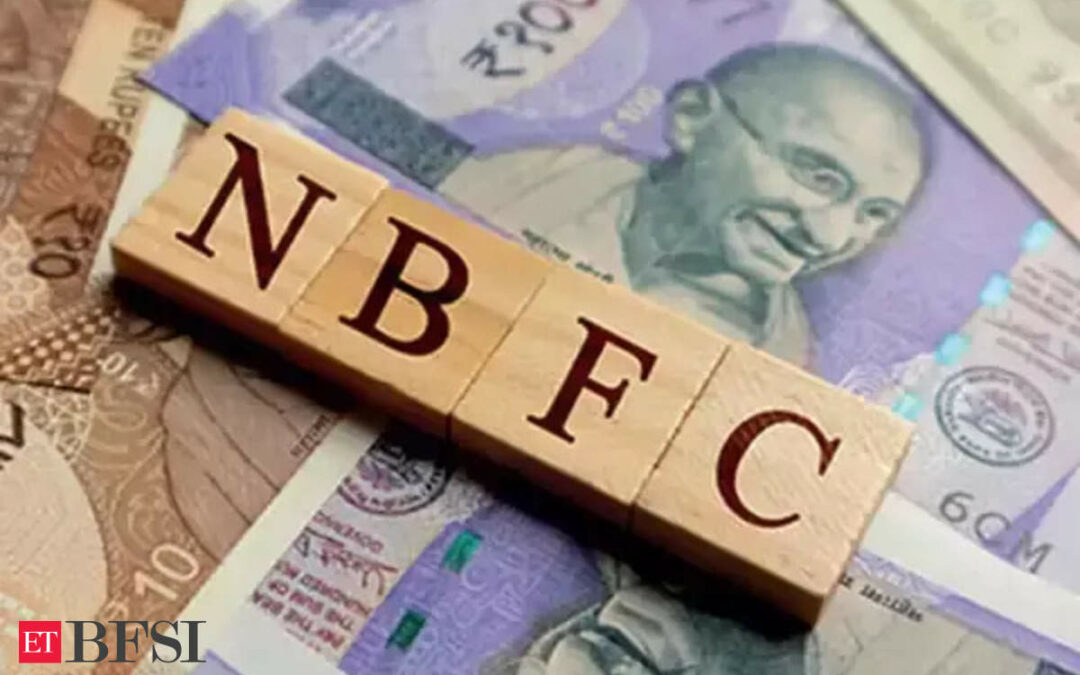The Non-Banking Financial Company (NBFC) sector in India has undergone remarkable growth, establishing itself as a significant player within the country’s financial landscape.
As of 2023, the NBFC sector has reached an impressive size of USD 326 billion, underscoring its expanding influence in the financial domain. This growth is primarily attributed to a substantial increase in the demand for specialized financial services, particularly from Micro, Small, and Medium Enterprises (MSMEs), which face challenges in obtaining loans from traditional banks.
Care Edge Rating findings reveal a robust annual growth in gross bank credit offtake, which rose by 15.5% year on year (y-o-y) in February 2023. This surge was observed across all sectors, with Non-Banking Financial Companies (NBFCs) and unsecured personal loans segments particularly driving the momentum.
Notably, personal loans experienced accelerated growth, reaching 20.4% y-o-y in February 2023, up from 12.5% in the previous year. This surge was attributed to increased demand for other personal loans, credit cards, housing, and vehicle loans.
The recent CIBIL-SIDBI MSME Pulse Report highlights the accelerated growth within the micro segment, a phenomenon attributed to an improvement in lender confidence. This positive shift in confidence has contributed to the thriving ecosystem of micro-enterprises.
Furthermore, the NBFC sector’s momentum has been augmented by the proliferation of digital lenders offering alternative financing options. This trend has provided a significant boost to the sector, allowing it to cater to the evolving financial needs of businesses and individuals.
The collaborative efforts of NBFCs and digital lenders are contributing to the sector’s overall dynamism and its ability to serve as a vital source of financial support for diverse economic entities, especially the MSMEs facing obstacles in accessing traditional bank loans.
Growth in the NBFC Sector
One of the key drivers for the expansion of the NBFC sector is the escalating demand for credit from the MSMEs. Traditional banks have often presented challenges for the MSMEs in securing loans due to stringent eligibility criteria. In response to this, digital lenders offering alternative financial solutions have emerged, playing a crucial role in facilitating the growth of the NBFC sector.
NBFCs, especially those with a focus on financial inclusion, adopt a flexible approach to support the growth of MSMEs. Notably, micro MSMEs constitute a substantial 90% of the sector and contribute up to 25% of the MSME portfolio, according to the Small Industries Development Bank of India (SIDBI). This underscores the significant role that NBFCs play in fostering the development of the MSME sector in the country.
Moreover, the government’s commitment to promoting financial inclusion through initiatives like Pradhan Mantri Jan Dhan Yojana (PMJDY), Mudra Yojana, and Stand-Up India has further elevated the importance of NBFCs. These initiatives position NBFCs as vital implementers, providing credit access to the unbanked and underbanked populations.
Regulatory Changes
The regulatory landscape for NBFCs has witnessed significant changes, particularly with the Reserve Bank of India (RBI) tightening rules for consumer lending. Concerns about the rapid growth of consumer loans prompted the RBI to increase risk weights for consumer credit exposure, excluding certain categories like housing, education, vehicle, and gold-backed loans.
The new rules mandate regulated entities to establish board-approved limits for consumer credit exposure, emphasizing strict adherence and continuous monitoring by the Risk Management Committee. Notably, top-up loans against depreciating assets like vehicles are now treated as unsecured loans, signaling a shift in credit appraisal methods.
Digital Transformation and Emerging Technologies
The rise of digitalization has been a driving force behind the NBFC sector’s growth. The adoption of digital platforms has enabled NBFCs to broaden their customer base, streamline operations, reduce costs, and enhance overall customer experience.
This transformation is further accentuated by the role of emerging technologies, including Artificial Intelligence (AI), Machine Learning (ML), and Big Data. NBFCs are leveraging these technologies to develop innovative products and cater to low-income, urban customers in unorganized sectors.
The use of technologies such as Robotic Process Automation (RPA) has streamlined operational workflows, resulting in increased productivity, accuracy, and cost savings.
Strategic Partnerships and FinTech Integration
In response to stricter regulations and the evolving financial landscape, NBFCs are increasingly focusing on strategic partnerships and embracing FinTech solutions. The partnership models between traditional NBFCs and FinTech companies are reshaping the sector.
This collaboration allows NBFCs to tap into FinTech’s agility and technology, offering solutions such as alternative credit scoring models, fraud detection, and enterprise automation. The symbiotic relationship between FinTechs and NBFCs is creating a robust ecosystem that addresses the challenges posed by traditional banking systems.
Potential Implications for 2024
Looking ahead to 2024, the NBFC sector in India is poised for continued growth, driven by several factors. The government’s commitment to financial inclusion, coupled with the sector’s digital transformation, is expected to contribute to sustained demand for NBFC services. The regulatory changes, while imposing stricter guidelines, aim to ensure the sector’s stability and prevent excessive risk-taking.
The integration of emerging technologies, including AI and ML, is anticipated to redefine credit appraisal processes, enabling faster, more accurate decision-making.
The role of NBFCs in achieving the goals outlined in the Atmanirbhar Bharat vision is crucial. As businesses aim to expand capacities post-pandemic, NBFCs have the opportunity to facilitate the flow of credit to both businesses and households. The upcoming budget in 2024 presents an opportunity to establish targeted schemes, especially for micro-businesses, aligning with the government’s push for economic recovery.
To Conclude
The NBFC sector in India has undergone significant transformations, marked by growth, regulatory changes, and technological advancements.
Despite challenges, the sector’s future appears promising, with a projected CAGR of 18.5% between 2021 and 2026. As NBFCs adapt to the changing terrain, success in 2024 and beyond will hinge on strategic collaborations, embracing technological advancements, and a dedicated focus on promoting financial inclusivity.
(The author is Founder & CEO of Red Fort Capital; Views are personal)











